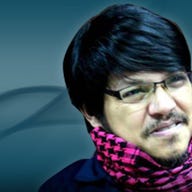Weirdest IT story I've written


In my almost a decade of covering the IT beat here in the Philippines, I've written different sorts of stories--some of them quite interesting (at least in my point of view), some were technical (although I also didn't really understand the IT concepts myself), and a few that we might label as weird. In my book, weird means absurd.
Perhaps, the most unusual article I've penned is one I wrote on March 2007 about an initiative to make Edsa, the most prominent road in the country and the site of the two "People Power" revolts, a Wi-Fi tunnel.
Here's the story I filed for the Infotech section of the Manila Bulletin:
- Bold venture to make Edsa world's first Wi-Fi highway
Due to monstrous traffic jams that occur in its long stretch almost every day of the week, a company is offering commuters the chance to connect wirelessly to the Internet while traversing Edsa.
Aeonic Seiche Philippines, a technology company dominated by investors from Hong Kong, said in a recent press conference that it has launched what it said is a "proof-of-concept" to make Edsa the first Wi-Fi-enabled highway in the world.
Lincoln Chen, chief executive officer of Aeonic Seiche, said the initiative is now on its trial stage. Commuters with Wi-Fi-enabled devices such as laptops, cellular phones and PDAs, can actually connect for free from Ortigas, Pasig City to Kamias in Quezon City.
The project has been dubbed SeicheTunnel, because Edsa, once formal commercial operations starts on Apr. 14, will be blanketed in a tunnel-like Wi-Fi signal.
Chen said the initiative is a breakthrough and unprecedented in the world as it allows to Wi-Fi user to transfer from one hotspot to another continuously--the technology once exclusively used in cellular phones.
However, due to the "mesh" technology that allows a hotspot to "hand over" a Wi-Fi user to another hotspot without being disconnected, nomadic connectivity is achieved.
No other technology that is commercially available can be found in other parts of the world, the pony-tailed Chen said.
Apart from traffic, he said Edsa is the perfect testing ground for the SeicheTunnel because most Filipinos have drivers or chauffeurs in their cars, making it possible for them to surf the Internet while on the road.
Although officials admitted they are still awaiting regulatory approval, installation of vital equipment is almost complete and that customers can have a guaranteed speed of 256Kbps.
Company executives, however, warned that the Wi-Fi service "is not everything". "This will not replace the cell phones because it's not voice-grade. But, if it will be used for data, it's as good as DSL," Chen said.
But he said they already have a technology roadmap that can implemented in the future that will allow the infrastructure to "carry audio- and video-quality contents".
Officials said access can be purchased online using a credit card: Seiche Wifi Light 5 plan for P200 (five hours of usage and expires within 30 days from first use); Seiche Moderate 10 for P350 (10 hours of usage, good for 60 days); and Seiche WiFi Unlimited for P850 (unlimited usage for one month).
Hourly access plans are also available and may be purchased at authorized dealers. For starters, the Seiche Compliant Wi-Fi Access Kit worth 1,500 pesos, with a USB adapter for signal transmission from the client device to the Seiche Tunnel wireless network. These are first time promotional rates, the company said.
"The SeicheTunnel network at Edsa is only the beginning. We have already lined up future SeicheTunnel projects and in time, the whole of Metro Manila will be a SeicheTunnel zone, a truly mobile Wi-Fi Digital City as we envision it," Richard Yu, the company's president and COO, said in a statement.
Now, if readers of this blog asked me whatever happened to the venture more than two years after it was launched, I wouldn't know what to answer. The last time I talked to the PR person of this project about a year ago, he said the venture was doing well. But, I doubt if this weird attempt to create a Wi-Fi tunnel ever took off the ground.
If you also have weird IT stories to tell, please share it here as well.